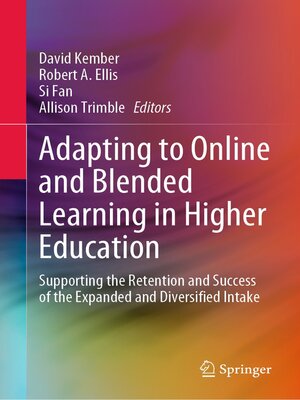Adapting to Online and Blended Learning in Higher Education
ebook ∣ Supporting the Retention and Success of the Expanded and Diversified Intake
By David Kember

Sign up to save your library
With an OverDrive account, you can save your favorite libraries for at-a-glance information about availability. Find out more about OverDrive accounts.
Find this title in Libby, the library reading app by OverDrive.



Search for a digital library with this title
Title found at these libraries:
| Loading... |
Higher education has undergone a massive transformation in teaching and learning in a very short period of time since the onset of Covid-19. Students, teachers and universities have had to adopt online and blended learning, often with little or no experience or models of good practice to draw upon. It is clear that blended and online learning are here to stay. This book draws on research from universities that have adopted online and blended learning to facilitate the expansion and diversification of their intake; which resulted in considerable experience and expertise in online and blended teaching. The book describes a model, tested with qualitative and quantitative data, which shows how teachers can support the retention and success of online and blended learners with four high-quality pedagogical elements: bite-sized videos of interest and relevance; learning materials that are well organised and provide a clear learning roadmap; discussion forums which are set up and moderatedso as to result in lively student-student and student-teacher interaction; and, online teachers being approachable and responsive to communication with individual students through email, phone and online communication platforms. This model is explained and profusely illustrated with examples from the teaching of award-winning teachers.
This book introduces the concept of a spectrum from traditional to contemporary models of admission and course delivery in higher education. It explains how universities which have adopted a contemporary model, with high levels of blended and online learning, have been able to expand their intake and markedly diversify the student body. It discusses how to support the retention and success of online and blended learners. Student support services are examined from the perspectives of service providers and online and blended learners and the case is made for support services being aligned with student needs. The book has a discussion of university management systems which utilise feedback at all levels to improve alignment between support service provision and student needs.






